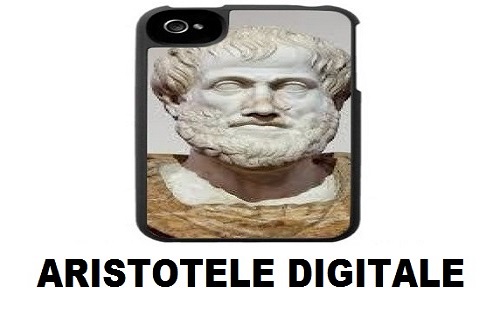
Hegel and the Contradiction
In a forthcoming text entitled Identity/Contradiction, Vladimiro Giacché writes: “In classical logic the identity/contradiction dichotomy sees a dominance of the first term which excludes contradiction. Between the eighteenth and the first half of the nineteenth century, the situation was reversed. On the one hand, Kant demonstrates the inevitability of contradiction for thought. On the other hand, Hegel makes contradiction one of the cornerstones of his own thinking. Not only “all things are in themselves contradictory”, but precisely the ability to sustain/conceive contradiction becomes the great discrimination between the different structures of reality and between the different categories of thought”.
Hegel opens to digital
Perfect: Hegel shifts not only the gnoseological and epistemic primacy, but also the ontological one, from identity to contradiction (we could also write difference). This is nothing short of formidable, and so (without knowing it) he “opens” to the emergence of digital which will become a reality with Boole’s logic.
The Discreet and the Continuous
However, what does it have to do with it! Is not digital a technological issue? Here is the point: digital is not a technological and neither a digital issue. Rather, it is the emergence of the primacy of the discreet over the continuous.
The continuous is based on identity, the discreet on difference;
the continuous is something causal-linear and needs a correspondence with the universal (to Descartes);
the discreet is something random-translinear and it produces universal principles on a case-by-case basis (at Feynman);
the continuous tends to consider anomaliesas difference (and struggles to justify it);
the discreet considers identity an option among possible infinites;
the continuous reduces the essence to matter (so even in the most idealistic versions it thinks of a ultimate reality in the form of atoms);
the discreet is quantum (so basically bit- based, being the bit the unit of the in-formation)
The identity as a logical possibility
The truth no longer stands on the side of the identical, that is, in the correspondence between the idea of the thing and the thing. Instead, it stands in the difference which – and this is not a minor consideration – admits the existence of a singular consistency of the identical. It does not deny the identical but places it within the scope of the logical possibility rather than in the anthropological and experiential one. In other words, the world can be, and it is, something different from how we perceive it.
Today the Discreet is dominant
Continuous and discreet coexist both in human thought and in practices. However, the discreet, in many respects counterintuitive, has become dominant today.
Therefore, not everything changes, but the whole changes.
The in-formation and the bit
In order to try to enter this labyrinth by surfing in the plots of classical philosophical thought (the one that is based on the identical) we should, quite simply, understand the analogy between identity and the continuous and between the difference and the discreet. We should also remember, with Einstein‘ s thought, that matter is energy (and viceversa, of course, not in linear form). Moreover we should remember with Wiener‘s thought that everything is matter, energy and in-formation. Even in this triad the system is not linear, but discreet. Since matter and energy can also be information, and in-formation is neither matter nor energy, the bit is uniquely a data or, if you want, what is given.







